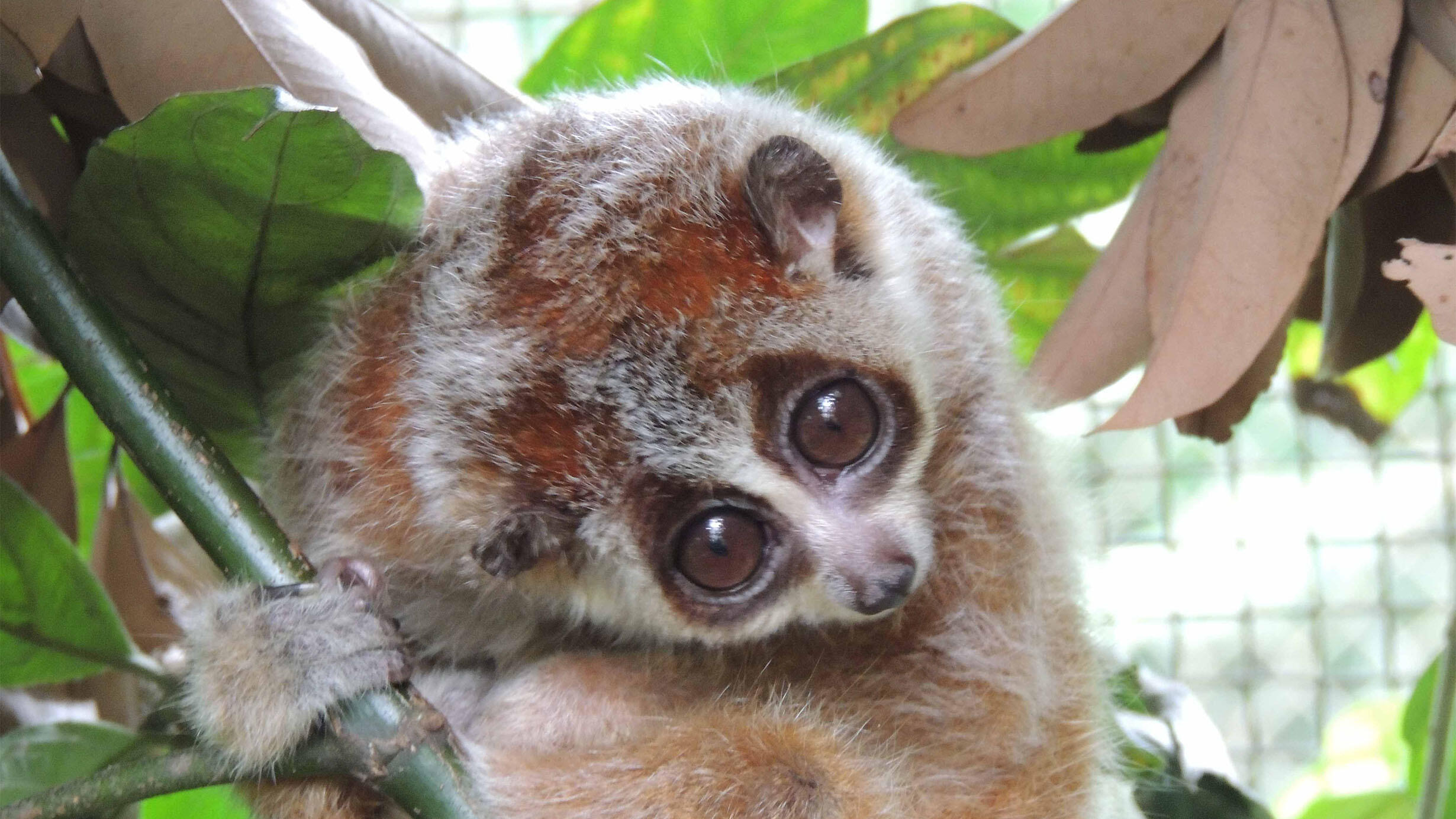 The newly described species of pygmy loris, Xanthonycticebus intermedius, is found in northern Vietnam, Laos, and China.
The newly described species of pygmy loris, Xanthonycticebus intermedius, is found in northern Vietnam, Laos, and China. Mary Blair/© AMNH
A new species of pygmy loris has been confirmed based on a study that used specimens from museums around the world. The research, led by Museum conservation scientists, is already being applied by rescue centers in Vietnam to its rescue-and-release protocols for these threatened nocturnal primates.
Slow lorises and pygmy lorises, which are found in Asia, are poorly understood species that are also globally threatened with extinction, due to high demand for illegal wildlife trade.
There are eight recognized species of slow loris across south and southeast Asia and, up to now, just one recognized species of pygmy loris. Last year, the pygmy loris was placed in its own genus due to striking differences from slow lorises. But scientists have long suspected that there was more than one species of pygmy loris, said Mary Blair, director of biodiversity informatics research at the Museum’s Center for Biodiversity and Conservation (CBC) and lead author on the study, published this month in the journal Genes.
In 1960, renowned Vietnamese primatologist Dao Van Tien described a second pygmy loris species—but his research was discounted. Molecular biology was still in its early stages, and the technology to provide DNA evidence to show the species was distinct was not yet available. In the 2000s, researchers were finally able to obtain a DNA sequence from Dao Van Tien’s type specimen, but still lacked a large enough set of information to compare with sequences from other pygmy lorises across their entire range.
With funding from the U.S. National Science Foundation, Blair, along with Eleanor Sterling, who was the CBC’s chief conservation scientist emerita at the time, Museum Research Associate Minh Le, and collaborators, used scientific collections from across the United States, as well as in Vietnam and France, to investigate speciation among lorises by analyzing DNA from slow loris and pygmy loris specimens collected between 1884 and 1980.
They combined these data with genetic samples collected during conservation field surveys led by Blair in Vietnam and physical measurements of skulls from the Museum specimens.
The researchers found two genetically distinct groups within the pygmy lorises that also have differences in skull and mandible size. The DNA evidence suggests these groups diverged from one another more than one million years ago and occupy different geographic areas, with the new species representing pygmy lorises from northern Vietnam, Laos, and China, and the southern group including pygmy lorises from southern Vietnam and Cambodia.
Hoang Thach/© AMNH
The groups are separated by a common distribution barrier for many vertebrates in the region, the Hai Van Pass located between Quang Nam and Thua Thien Hue provinces in Vietnam.
For the new species name, Xanthonycticebus intermedius, the researchers resurrected the type specimen and name (“intermedius”) first used by Tien in 1960. “We carried that name over in part to honor his groundbreaking research on mammals in Vietnam,” Blair said.
The type specimen for the new species is located at the Hanoi Zoological Museum at Hanoi University of Science in Vietnam, where Tien worked. As the study demonstrates, historic museum specimens, including the ones analyzed for this study, are important for ongoing conservation efforts.
Based on this confirmation of two distinct species of pygmy loris, confiscated animals from the southern lineage found in the north should be released back to the south for the highest likelihood of survival, the authors say.
“This information is already being used by species management partners in Vietnam, including the major rescue centers, and the genetic identifications of animals when they arrive is integrated into rescue and release protocols as a part of the Vietnam National Conservation Action Plan that CBC scientists and collaborators helped to develop,” Blair said. “In addition, the results have implications for the species management and captive breeding programs of global captive populations of pygmy lorises in places like zoos.”